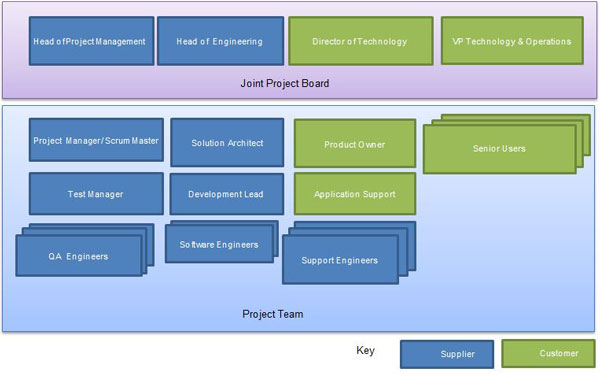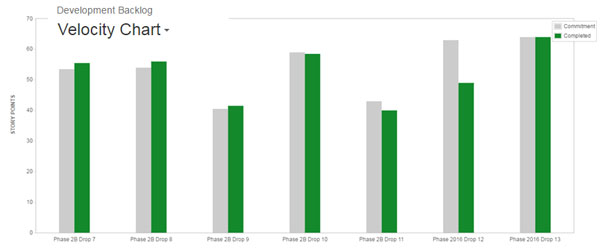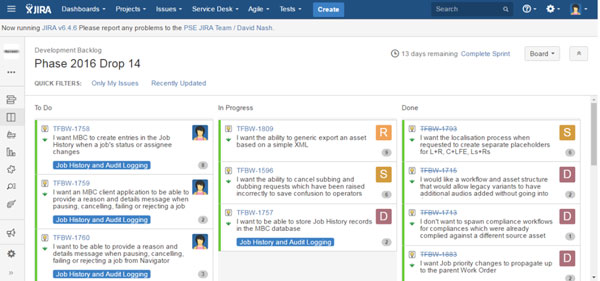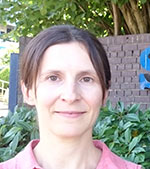Sony and PRINCE2 Agile® Case Study
Case Study


Case Study

- Case Study
- Project management
- Project planning
- Project progress
- PRINCE2
June 26, 2017 |
7 min read
- Case Study
- Project management
- Project planning
- Project progress
- PRINCE2
This Case Study shows how Sony used PRINCE2 Agile® to manage the development and delivery of enhanced functionality for their file-based workflow programme. The driver behind the project was the need to be more responsive to customers’ demands.
As Sony was already a PRINCE2®-aligned organization and wanted to adopt a Scrum-based agile approach, PRINCE2 Agile was chosen as the project management method.
This case study is also available to read in Japanese (PDF, 754KB).
Introduction
The Organization
Sony Corporation is a multinational organization with its headquarters in Japan. The business includes consumer and professional electronics, gaming, entertainment, and financial services and is one of the leading manufacturers of electronic products for the consumer and professional markets.
The Media Solutions Department is part of Sony Professional Solutions Europe and delivers broadcast equipment, software and media solutions into organizations across Europe. The Media Solutions Department has three key business areas:
- live production, incorporating studios, outside broadcast vehicles and production facilities
- news, covering newsroom editors, agency newswire systems and playout systems
- content management and archive solutions.
Summary of the project and its outcomes
This Case Study shows how Sony used PRINCE2 Agile® to manage the development and delivery of enhanced functionality for their file-based work flow programme. The driver behind the project was the need to be more responsive to the Media Solutions Department’s customers’ demands.
The system was built around Sony’s Media Backbone Conductor and Navigator products. An infrastructure with base functionality was delivered in the early phases of the project and Sony wanted to continue the development of the product with enhanced features and services. They identified a requirement for a more flexible way of selecting the next features to be developed that would ensure that the needs were always assessed and prioritized.
What was the problem?
Keeping pace with change
The initial phases of the project involved a long design period, followed by delivery and then deployment of the software. This was usually three to six months after the requirements had originally been agreed, during which time some had changed.
The need for process and technology transformation was driven by the need to realize the benefits of the true end-to-end file-based operation. It was very important to keep all stakeholders involved and part of the process. This included prioritizing features with the user community, measuring return on investment (ROI) and introducing changes in a controlled manner. Key to the success of this project has been the creation of a culture of continuous improvement.
It was essential to improve the sharing of content and automate some of the processes to free up valuable user time for core production activities.
The proposed solution
As Sony had identified a need to be able to respond to user requirements faster, they decided to consider an agile-based methodology.
The solution had to ensure that:
- new developments are always relevant to the current business needs
- there is flexibility to reprioritize future software deliveries without the need to raise change requests and seek top management approvals.
As Sony was already a PRINCE2®-aligned organization and wanted to adopt a Scrum-based agile approach, PRINCE2 Agile was chosen as the project management method.
Project Governance
The project followed the PRINCE2 governance structure and had a project board with user, supplier and business representation, see Figure 2.1. The structure illustrates how local role names can be mapped onto the overall PRINCE2 governance framework, retaining customer/business supplier representation. For example, the Director of Technology effectively approved decisions around the backlog and was ultimately responsible for acceptance of the product.

Figure 2.1 Project governance structure
Communications, progress and issue reporting were strongly based on the management by exception principle and PRINCE2 reporting guidance. End stage and highlight reports were still used as communication channels between the project manager and the project board.
Aims and objectives
The major objective for the Media Solutions Department was to reduce project delivery time and reduce project risk by increasing product quality. The aims of this work were to create and adopt a workable agile approach under PRINCE2 and to prove it on a real project.
Approach
Sony already had PRINCE2 elements in place and delivery teams familiar with agile development. The approach was to combine the two, using the PRINCE2 Agile approach, to make sure that the strengths of PRINCE2 were not lost in using agile: in particular, the governance, communication and quality management aspects.
The adoption of a PRINCE2 Agile approach has been phased into the organization, partly through training and partly through adoption and implementation of the method.
We started by involving the delivery project managers, but then realized that all the stakeholders across the business needed to be engaged to achieve the desired improvements and flexibility in delivery.
The approach required more user involvement during development than the previous development method, but provided better business value because the solutions solved the business problems of the user stakeholders. Frequent demos took place involving the user stakeholders which encouraged discussion of the product features during development. The user acceptance process was much easier than in previous projects as the users were already familiar with the products and had been involved in their evolution through the project.
The development team used automated tools to support agile activities such as backlog management (Figure 4.1), progress tracking (Figure 4.2, sprint report) and Kanban boards (Figure 4.3).

Figure 4.1 Backlog velocity chart

Figure 4.2 Sprint report

Figure 4.3 Kanban board
The project used the PRINCE2 Agile guidance about contracts to help build agreements with their clients based on throughputs rather than end products alone. Traditional fixed price and scope or time and materials contracts were not suitable, so a new model based on throughput of functionality was established. Developer estimates based on planning poker sessions fed directly into this mechanism, and the customer was directly involved in the sessions to ensure confidence and integrity in the process.
Conclusion
Challenges
Sony has been a PRINCE2-aligned organization for some time and is used to delivering predominately hardware/software application solutions in a traditional design, build, and commission approach.
We quickly realized the limitations of this process, as our software offerings became more customizable and projects started to exceed a three to six month turnaround. Therefore we needed to look at:
- the end-to-end lifecycle
- how we identify agile-based opportunities, and when agile might not be applicable
- contracts for agile projects
- manage the sprints of specification and delivery
- supporting a continuously evolving live environment through new services, changes in workflows, partners or integrated systems.
One of the key challenges was setting up a commercial and legal framework which supported the scope not being fixed until the start of each sprint, and without the overhead of using the existing change control process. This was addressed by using an agile approach to building agreements based on throughputs.
What was the biggest success factor?
From a Sony prospective, PRINCE2 Agile has enabled us to better manage the changes delivered to the users. The methodology has allowed us to reduce the overheads of change requests/impact assessments and to focus on delivering exactly what is needed and ultimately supporting the acceptance of the delivery and faster release back into the operation.
Benefits already realized
The project has already resulted in reduced delivery costs because of:
- less upfront design
- simpler contracting of projects
- shorter time to completion, roll out
- minimized rework
- reduced administration through the use of automation tools.
All of which have contributed to increased customer satisfaction because of:
- better customer engagement during the project
- better alignment to business needs
- more of the required features being delivered.
Lessons learned
1. Initially we took the decision that going agile would be mainly for project managers involved in product delivery and our in-house development teams. This proved to be far from reality. It is key to involve everyone from account management and sales, bid teams, architects, support, legal and procurement teams, so that the entire lifecycle can be assessed.
2. All parts of the organization need to understand the agile approach, not just the delivery project managers.
3. Sales and bid managers, support managers and engineers, need to agree on how to sell the approach and then support the solution as more features are being developed.
Axelos’ view
Combining the governance strengths of PRINCE2 with the flexibility of agile delivery was the driving force behind AXELOS’ development of PRINCE2 Agile. The Sony experience is a very good example of how the benefits of both PRINCE2 and agile can be brought together to provide a delivery solution that matches the project environment.
As experienced PRINCE2 users, Sony recognize the need for good project governance and have retained the strengths of PRINCE2’s controls but adapted for agile working. Agile was identified as the appropriate delivery approach to improve delivery times and engage with users. The synthesis PRINCE2 and agile has provided a delivery approach that is already realizing benefits.
About the author

Yucel Timur is Head of Project Management for Sony Professional Solutions Europe, with over 15 years’ project delivery experience in the Broadcast and Media Industry. Yucel has built a Project Management group that is delivering a variety of complex projects across Europe. As Sony’s solutions have become more customizable, the Project Management group continues to adapt processes, techniques and skills to improve project delivery and quality. This supports Sony with the objective of always being at the forefront of delivering solutions into the broadcast industry and is leading the way in providing feature rich tools and applications to customers across the globe.
For more information, visit pro.sony.eu

Camilla Brown has 15 years’ experience in software product development and solution delivery in the broadcast and media industry. During the last few years, Camilla has ventured into the world of project management while still holding on to agile software development processes, bringing change to the way Sony delivers some of its professional solutions.